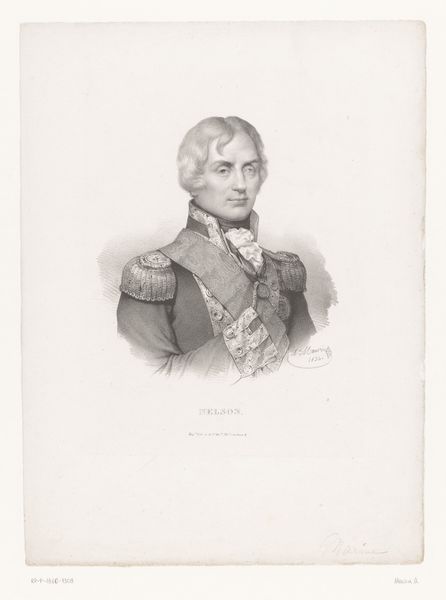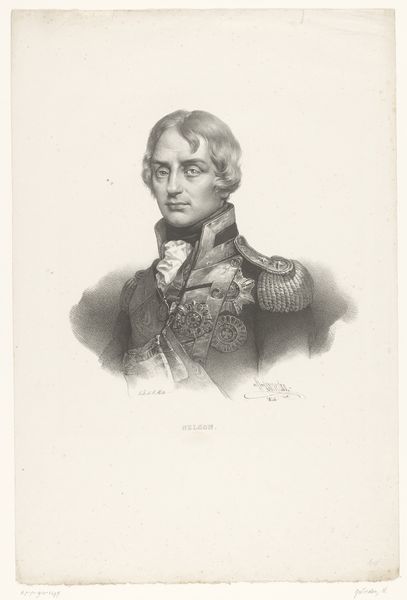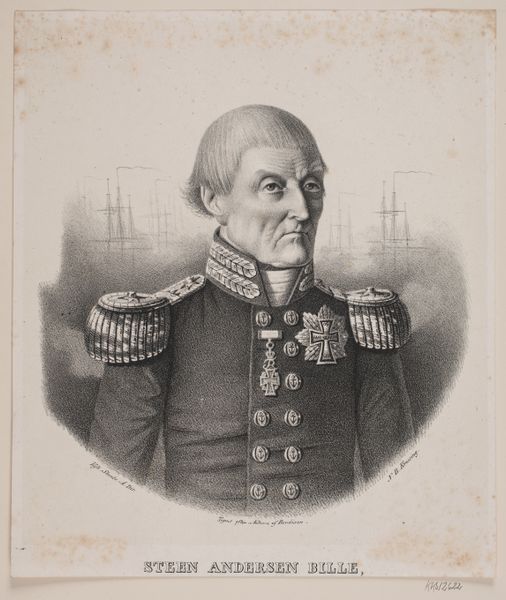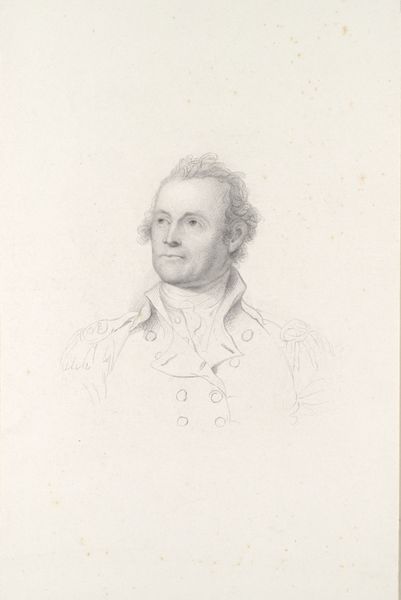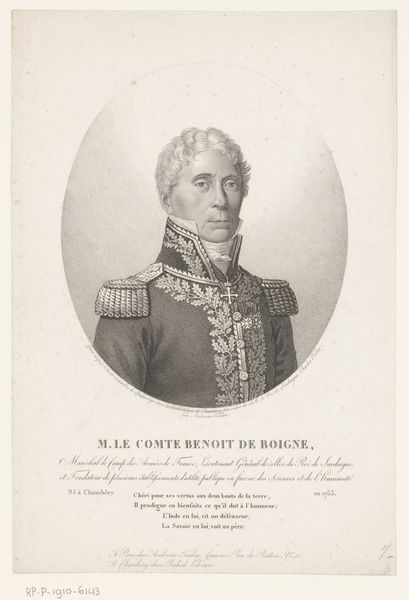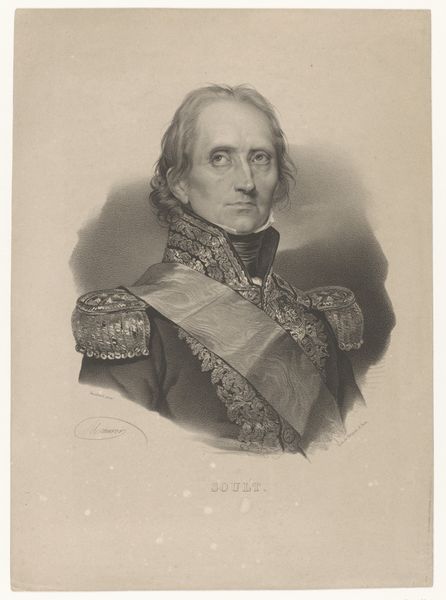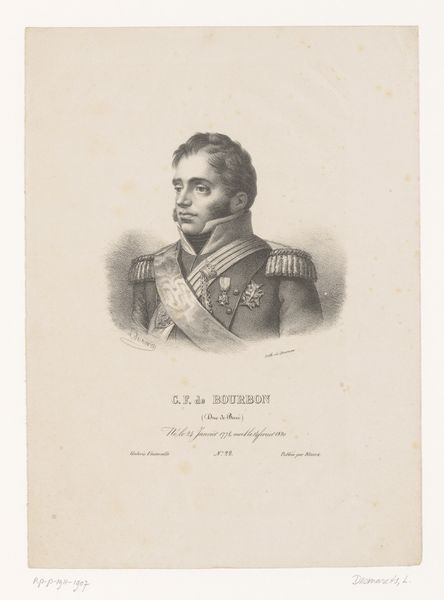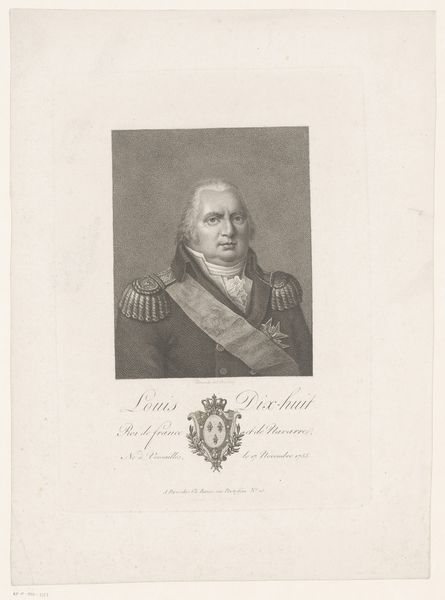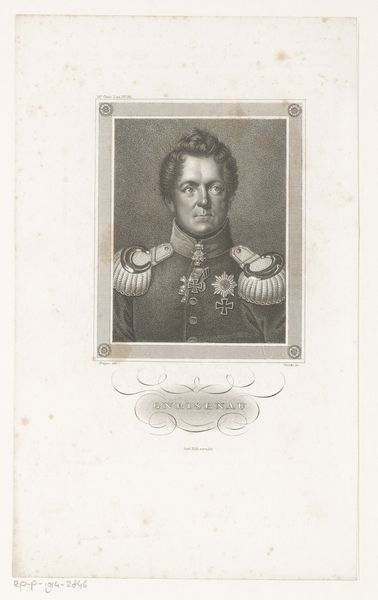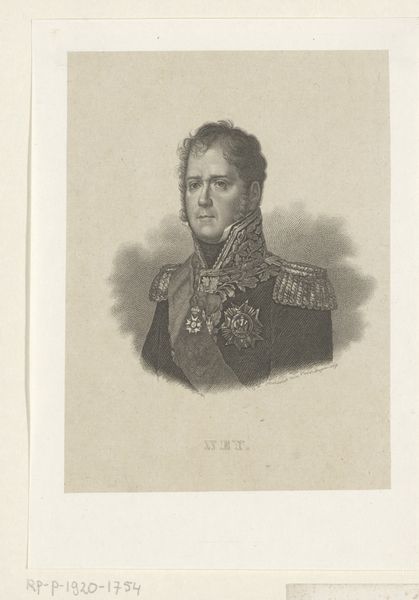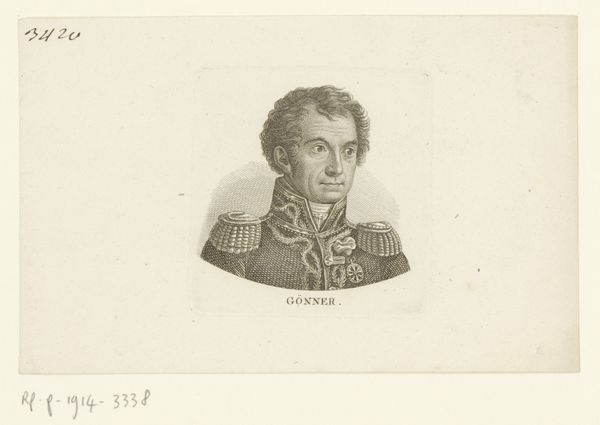
#
portrait
#
neoclacissism
#
history-painting
#
academic-art
Dimensions: height 490 mm, width 362 mm
Copyright: Rijks Museum: Open Domain
Here is a portrait of Admiraal Jan Coenraad Koopman by Nicolaas Pieneman made with lithography. At first glance, the eye is drawn to the meticulous detail and contrast, which lends a formal, almost severe air to the admiral's countenance. Consider the lithographic technique, which allows for the rich tonal gradations seen here. Pieneman uses this to enhance the texture of the admiral's uniform and the medals displayed prominently on his chest. Each button and embellishment is rendered with precision, indicating not just a commitment to realism but also an engagement with the codes of status and representation. The high contrast between light and shadow, a chiaroscuro effect, adds depth and drama, but it also reinforces a sense of the admiral's imposing presence. What does it mean to portray power and status in this way? How does Pieneman use the very qualities of the lithographic medium—its capacity for detail, its tonal range—to construct an image that speaks to both the individual and the broader structures of authority and representation?
Comments
No comments
Be the first to comment and join the conversation on the ultimate creative platform.
